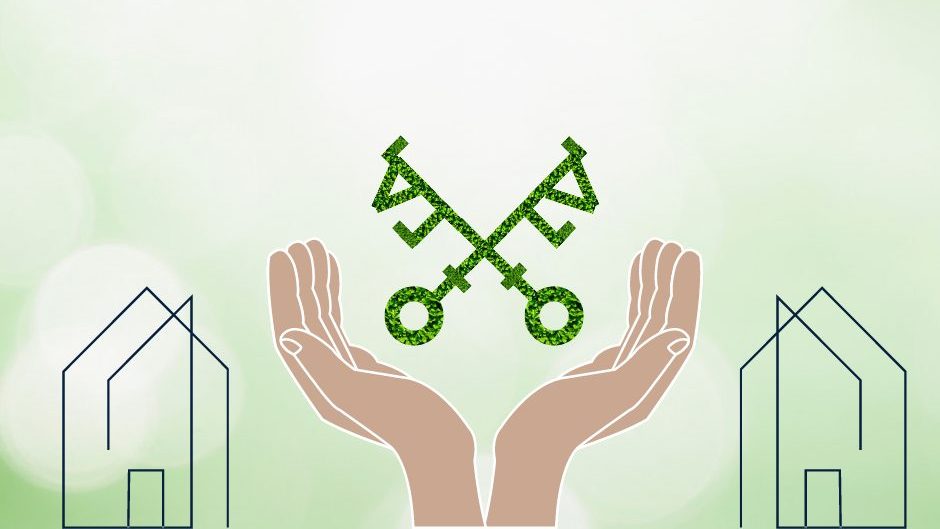As proud members of the Lune Valley community, we’re all about preserving the natural beauty and peace that make this area special. And let’s face it, the present times are nudging us to embrace greener energy solutions. If you’ve cherished your home for years or reside in an older property, the idea might feel daunting. But fear not, because there are plenty of little steps we can take together to make a big impact on going greener!

Hunting for Homes with Energy-Efficient Features
We hope you have seen our recent listings of the Parklands development! If not, go and take a look at the dedicated page on our site.These properties are listed as luxury eco villas as they embrace the greener way of living whilst also displaying the luxury lifestyle.
Embracing sustainability, Parklands incorporates innovative features such as mechanical ventilation and heat recovery (MVHR), an energy-efficient system that ensures fresh air circulation throughout the dwelling while maintaining optimal humidity levels and recovering heat from extracted air. An environmentally friendly high-performance air source heat pump, combined with underfloor
heating on the ground floor and radiators on the first floor, guarantees cosy warmth and lower energy consumption.
Furthermore, Parklands proudly boasts its commitment to energy efficiency. All properties hold a Double A Rating for energy efficiency and carbon emissions – a testament to their dedication to sustainable living. The Eco Villas at Parklands are A Rated for running costs, as reflected by the EPC rating, and also achieve an A rating for Carbon Emissions using the Environmental Impact (EI) Rating. This outstanding
achievement places Parklands among the 3% to have earned this remarkable AA rating.

Embrace Eco-Friendly Living: Quick Green Tips!
- Reduce, Reuse, Recycle: Minimize waste by practicing proper recycling and reusing items whenever possible. Provide information about local recycling programs and drop-off locations.
- Conserve Water: Reduce water consumption, such as fixing leaks, using water-efficient fixtures, and implementing water-saving practices like turning off taps while brushing teeth.
- Energy-Efficient Lighting: Use LED or CFL light bulbs, which consume less energy and last longer than traditional incandescent bulbs.
- Unplug and Power Down: Unplug electronic devices and chargers when not in use, as well as to power down computers and other energy-consuming devices when they’re not needed.
- Reduce Single-Use Plastics: Use reusable bags, bottles, and containers to minimize single-use plastics that contribute to pollution.
- Composting: Compost organic waste, this reduces landfill waste and creates nutrient-rich soil for gardens.
- Plant Trees and Gardens: Plant trees and create gardens, this can improve air quality, provide shade, and support local biodiversity.
Boost Your Property’s Energy Efficiency: Easy Tips!
- Sealing and Insulation: Properly seal gaps, cracks, and leaks in windows, doors, and walls. Adequate insulation helps maintain a consistent indoor temperature, reducing the need for heating and cooling.
- Energy-Efficient Appliances: Use Energy Star-rated appliances, which consume less energy and contribute to lower utility bills.
- Smart Thermostats: Install programmable or smart thermostats that allow homeowners to regulate heating and cooling based on their schedules, saving energy when it’s not needed.
- Window Treatments: Use energy-efficient window treatments like blinds, curtains, or shades to regulate indoor temperature by blocking or allowing sunlight.
- Solar Panels: Installing solar panels to generate renewable energy and potentially reduce electricity bills.
- Energy-Efficient Lighting: Use LED or CFL light bulbs throughout the property for lower energy consumption and longer lifespans.
- Low-Flow Fixtures: Install low-flow faucets, showerheads, and toilets to minimize water usage without sacrificing functionality.
- Roof Insulation and Ventilation: Proper roof insulation and ventilation can help regulate indoor temperatures and reduce the need for excessive heating and cooling.
- Energy Audits: Schedule professional energy audits to identify areas where energy efficiency can be improved and receive personalized recommendations.
- Landscaping Techniques: Strategically plant trees and shrubs around the property to provide shade during hot months, reducing the need for air conditioning.





